Anxiety disorders represent a category of mental health conditions that involve unhealthy or otherwise inappropriate levels of fear or worry. Symptoms associated with anxiety disorders can occur in response to an event, item, or occurrence, or may develop with no apparent cause.
Understanding Anxiety
Learn about anxiety
Though fear, worry, and anxiety are healthy responses to certain stimuli, sufferers of anxiety disorders will experience these responses more severely, over a longer period of time, and/or experience a great deal of disruption to their daily lives.
The following are among the more common types of anxiety disorders:
Generalized anxiety disorder: Characterized by excessive worry or fear about a wide range of events or occurrences, in a manner that is disproportional to the likelihood that these events will occur or be as severe as expected, generalized anxiety disorder is an overarching type of anxiety.
Panic disorder: Abrupt surges of intense fear or similar discomfort (often referred to as panic attacks) that can be accompanied by increased heart rate, sweatiness, sensations of being smothered, dizziness, and numbness. Panic attacks can occur without warning and usually last a few minutes.
Separation anxiety disorder: Inappropriately severe fear related to the absence of a loved one or other important person. This disorder can include fear that oneself or one’s loved one will be lost, killed, or kidnapped.
Agoraphobia: Profound fear or anxiety related to being in open public places, using public transportation, standing in line, or otherwise being surrounded by crowds of people. Agoraphobia may cause a person to become incapable of leaving his or her home.
Social anxiety disorder: Somewhat similar to agoraphobia, in that the intense fear is related to encounters with other people. Symptoms of social anxiety disorder are strongest in situations when the sufferer feels he or she may be subjected to scrutiny, such as when eating, speaking, or otherwise performing in proximity to strangers.
Selective mutism: Being unable to speak in certain situations, such as when meeting new people or when asked to speak in front of a group of people, describes what it means to have selective mutism. Individuals who suffer from selective mutism do not have problems speaking when among trusted friends or family members.
Specific phobia: Intense fear of specific objects or events, such as a fear of spiders, dogs, heights, or blood are included in the diagnostic criteria for specific phobia. Almost everyone has some type of fear, but individuals who suffer from specific phobia experience distress to the point that they are impaired from doing their job, completing daily tasks, or otherwise meeting personal or professional responsibilities.
Statistics
Anxiety statistics
The Anxiety and Depression Association of America (ADAA) reports that more than 40 million adults (about 18% of those ages 18 and older) suffer from some form of anxiety disorder, which makes anxiety disorders a common type of mental illness in the United States.
According to the National Institute of Mental Health (NIMH), between 4% and 5% of the U.S. population suffers from anxiety disorders that can be classified as extreme. The NIMH also reports that 6 of every 10 cases of anxiety disorders involve women, and that nearly 9 of every 10 anxiety disorder sufferers either fail to get professional help or receive inadequate treatment for their disorder.
Causes and Risk Factors
Causes and risk factors for anxiety
Considerable research supports the belief that biological, genetic, physical, psychological, and environmental influences acting alone or in combination with one another can lead to the development of an anxiety disorder. The following are among the risk factors that may be the strongest predictors that an individual will develop an anxiety disorder:
Genetic: Mental illness has a strong family component, which means that people whose parents or siblings have struggled with issues, such as anxiety, are at risk for similar experiences themselves. Studies have identified specific genes that regulate anxiety or predispose a person to struggling with anxiety. Studies of twins who were raised in separate environments also strongly suggest a genetic influence on the development of anxiety disorders.
Environmental: The presence of mental illness in a family can also be an environmental influence on the development of an anxiety disorder. If a person grows up in a particularly chaotic household, he or she may be at an increased risk for exhibiting symptoms of an anxiety disorder. This may be especially true if the presence of this chaos is accompanied by a failure to develop healthy coping skills. Other environmental influences that can contribute to the development of anxiety disorders include experiencing trauma, losing a parent or other loved one at a young age, and working at a particularly stressful or pressure-filled job.
Risk Factors:
- Gender (Women develop anxiety disorders at a higher rate than men do.)
- Alcoholism or other forms of drug abuse (Both addiction and withdrawal can lead to anxiety.)
- Family history of mental illness
- Personal history of self-harm
- Personality type (Naturally timid or shy people are at increased risk for generalized anxiety disorder.)
- Experiencing abuse, assault, or other trauma
- Death of close family member or intimate partner
- Poverty
Signs and Symptoms
Signs and symptoms of anxiety
With a wide range of anxiety disorders, no one symptom or group of symptoms will consistently present. However, the following are among the more common signs that may indicate a person is struggling with an anxiety disorder:
Behavioral symptoms:
- Inability to relax
- Unwillingness to leave the house
- Avoidance of certain people, places, or situations
- Distress when asked or required to make a decision
- Inability to remain still
Physical symptoms:
- Stomachaches and headaches
- Dizziness and lightheadedness
- Sudden onset of heart palpitations and excessive perspiration
- Numb and/or tingling extremities
- Shortness of breath
- Frequent urination and diarrhea
- Cold hands and feet
- Difficulty breathing
- Sleep problems
- Loss of appetite
- Muscle tension
Cognitive symptoms:
- Problems focusing or concentrating
- Sense of detachment
- Irrational fears, impulses, and compulsions
- Intense and troubling nightmares
- Feeling like one’s mind has “gone blank”
- Memory problems
Psychosocial symptoms:
- Persistent expressions of negativity
- Mood swings
- Guilt and shame
Effects
Effects of anxiety
The impact of an anxiety disorder can range from problematic to devastating. The following are common effects of untreated anxiety disorders:
- Isolation
- Exhaustion
- Job loss due to absence or poor performance
- Substance abuse
- Strained or destroyed personal relationships
- Depression
- Low self-esteem and self-worth
- Guilt, shame, and hopelessness
- Suicidal ideation and/or attempts
Co-Occurring Disorders
Anxiety and co-occurring disorders
The following are among the co-occurring disorders that are frequently experienced by people who are also dealing with anxiety:
- Obsessive-compulsive disorder (OCD)
- Posttraumatic stress disorder (PTSD)
- Attention-deficit/hyperactivity disorder (ADHD)
- Substance use disorders
- Anorexia, bulimia, and other eating disorders
- Learning disorders



